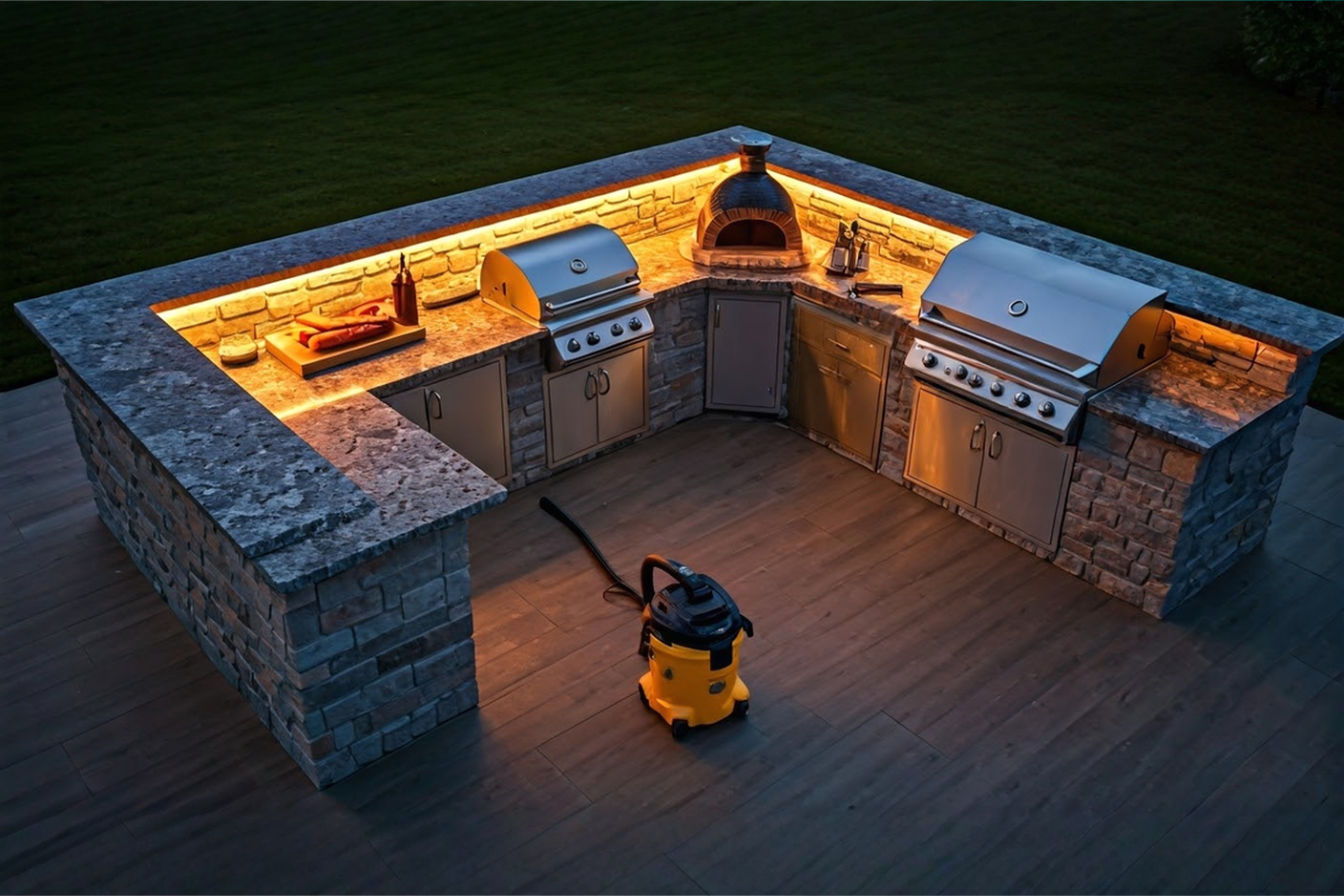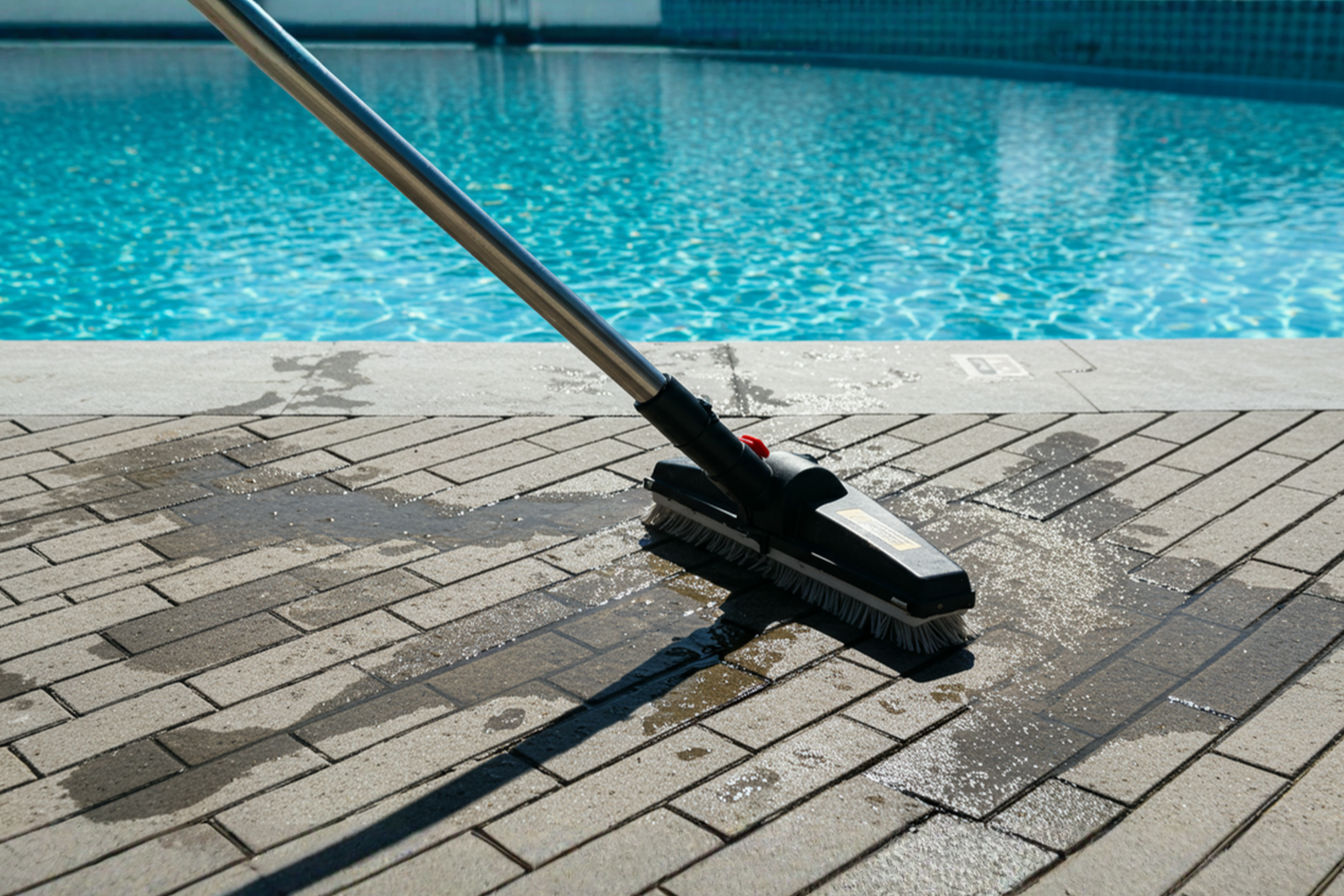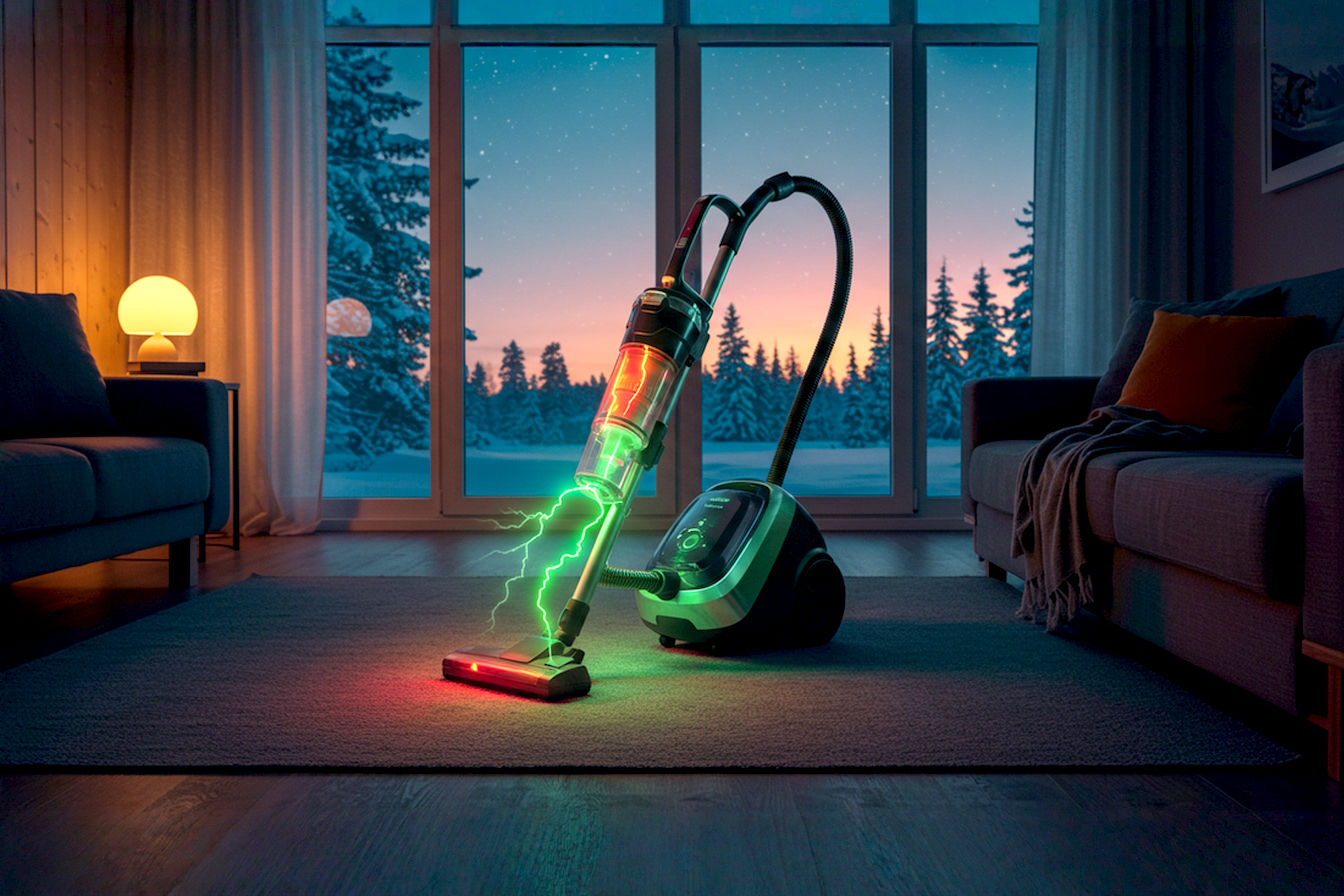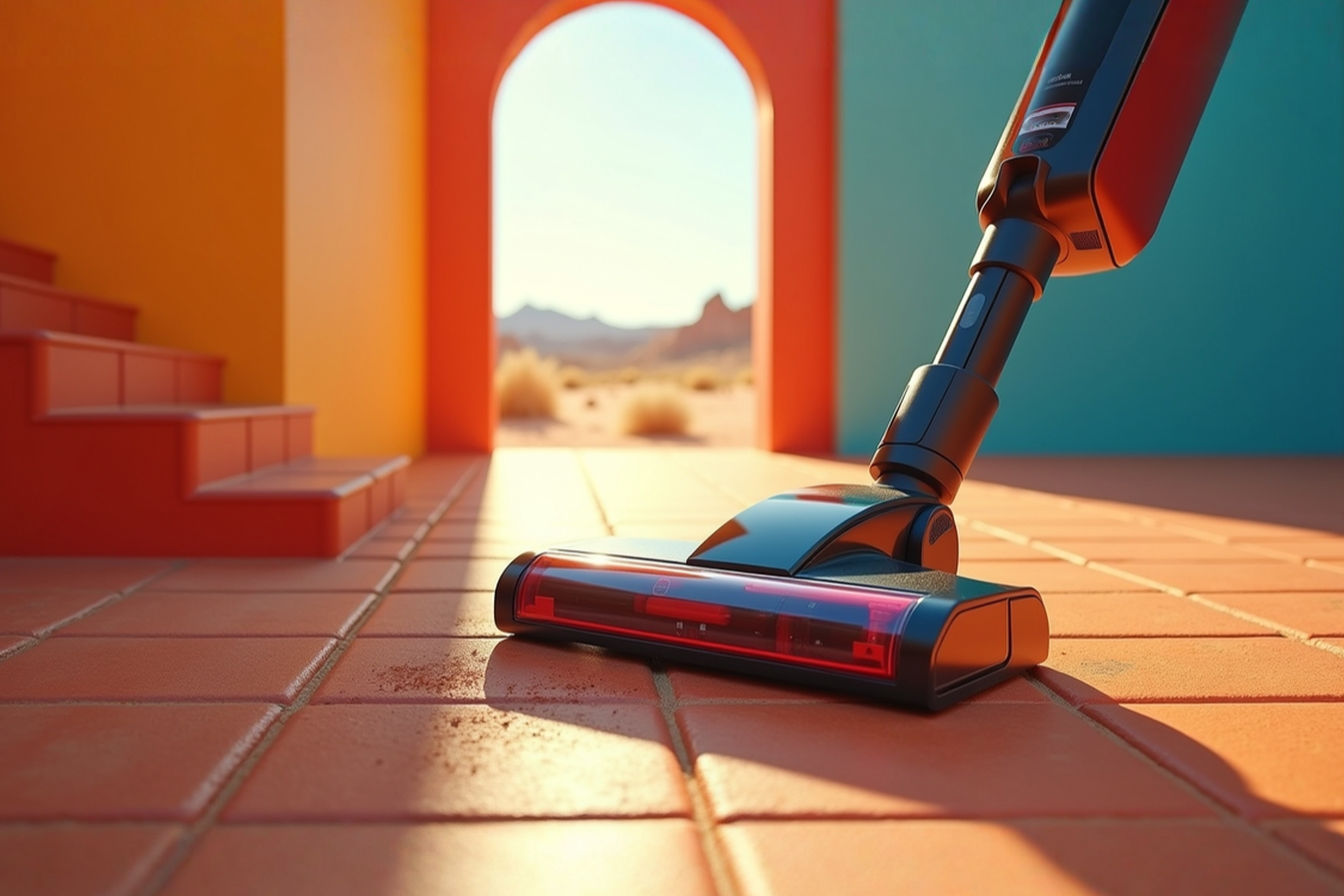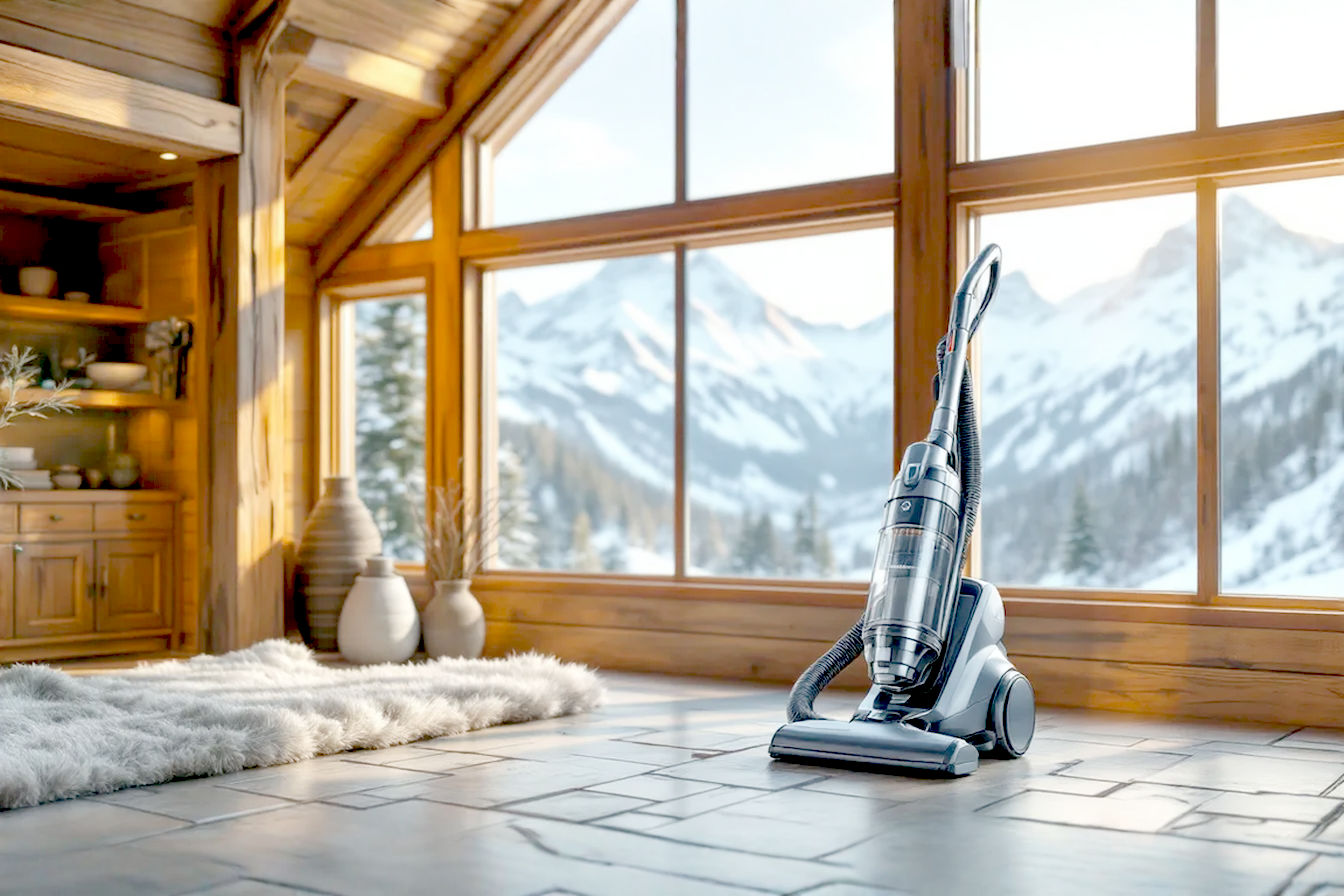Outdoor Kitchen Cleanup: Heavy-Duty Vacuums for Cooking and Entertaining Spaces
Transform your outdoor kitchen cleanup routine with the right heavy-duty vacuum. Our comprehensive guide covers everything from ash vacuums to wet/dry models, helping you maintain your outdoor entertaining space effortlessly.
This post may contain affiliate links. If you make a purchase through these links, we may earn a commission at no additional cost to you.
Outdoor kitchens have transformed from simple grilling stations to sophisticated cooking and entertaining spaces that rival their indoor counterparts. With built-in grills, pizza ovens, refrigerators, and seating areas, these outdoor living spaces create the perfect setting for memorable gatherings. However, this culinary paradise comes with unique cleaning challenges that typical household vacuums simply can’t handle.
Outdoor kitchens face exposure to weather elements, deal with stubborn food residue, and collect debris from surrounding yards and gardens. These spaces often incorporate multiple surface types—concrete, tile, wood, and metal—each requiring specific cleaning approaches. Without proper cleanup tools, your outdoor oasis can quickly lose its appeal and deteriorate prematurely.
Finding the right heavy-duty vacuum for your outdoor kitchen isn’t just about convenience—it’s about protecting your investment and maintaining a space that’s always ready for your next cookout or gathering. This comprehensive guide will explore the unique cleaning challenges of outdoor cooking areas, the types of heavy-duty vacuums designed for these spaces, and how to choose the perfect cleaning solution for your specific needs.
Understanding Outdoor Kitchen Cleaning Challenges
Outdoor kitchens face cleaning hurdles that indoor spaces don’t encounter. Let’s examine these challenges to better understand why specialized cleaning equipment matters.
Weather Exposure
Unlike indoor kitchens, outdoor cooking spaces endure rain, sun, wind, and seasonal changes. These elements create unique cleaning issues:
- Moisture accumulation leads to mold and mildew growth in corners and crevices
- UV exposure breaks down materials and creates brittle surfaces that shed particles
- Wind-blown debris like leaves, dirt, and pollen continuously collect on countertops and floors
- Freezing and thawing cycles can create cracks where debris gets trapped
Standard indoor vacuums aren’t designed to handle these conditions and can be damaged when exposed to moisture or outdoor elements.
Food Debris and Cooking Residue
Outdoor cooking often involves higher temperatures and different cooking methods than indoor kitchens, resulting in:
- Charcoal and wood ash from grills and pizza ovens
- Grease splatters that travel farther due to open-air cooking
- Smoke residue that settles on surrounding surfaces
- Marinades and sauces that dry and become difficult to remove
These substances require stronger suction and specialized filters that won’t clog or lose effectiveness when handling such materials.
Mixed Surface Types
Outdoor kitchens typically incorporate multiple materials that each present different cleaning challenges:
- Concrete and stone surfaces have porous textures that trap fine particles
- Wood decking and furniture collect debris between boards and in grain patterns
- Stainless steel appliances show every fingerprint and water spot
- Outdoor fabrics on furniture absorb spills and collect pollen
A versatile vacuum needs to transition between these surfaces without causing damage while maintaining effective cleaning power.
Seasonal Requirements
The cleaning needs of outdoor kitchens change with the seasons:
- Spring calls for removing pollen and winter debris
- Summer demands frequent cleaning of food residue and beverages
- Fall brings leaves and plant material
- Winter requires weatherizing and protection from moisture
This seasonal variation means your vacuum must be adaptable enough to handle different types of debris throughout the year.
Types of Heavy-Duty Vacuums for Outdoor Spaces
Several types of heavy-duty vacuums are well-suited for outdoor kitchen cleanup, each with specific strengths for particular cleaning challenges.
Wet/Dry Vacuums (Shop Vacs)
The workhorse of outdoor cleaning, wet/dry vacuums can handle both liquid spills and dry debris—a must for outdoor kitchens where beverages spill and rain collects.
Key advantages:
- Powerful motors (typically 5-6.5 HP for residential models)
- Large capacity canisters (5-16 gallons)
- Ability to switch between wet and dry pickup without changing filters (in premium models)
- Durable construction with impact-resistant materials
Wet/dry vacuums come in various sizes, from compact 1-gallon models for quick cleanups to massive 16+ gallon units for extensive outdoor areas. The versatility of these machines makes them the foundation of most outdoor kitchen cleaning arsenals.
Ash Vacuums
Specifically designed for cleaning cool ash from grills, smokers, and pizza ovens, these specialized vacuums feature fire-resistant materials and filters designed to capture fine ash particles.
Key advantages:
- Metal construction prevents fire hazards
- HEPA filtration captures fine ash particles
- Heat-resistant hoses and components
- Smaller footprint for storage in outdoor kitchen areas
While more specialized than other options, an ash vacuum is invaluable if you frequently use charcoal grills, wood-fired ovens, or fire pits in your outdoor space.
Backpack and Handheld Vacuums
For outdoor kitchens with tight spaces or multiple levels, backpack and handheld vacuums offer mobility and flexibility.
Key advantages:
- Hands-free operation (backpack models)
- Ability to navigate steps and different levels easily
- Access to tight spaces between appliances
- Less strain when cleaning vertical surfaces
These models are particularly useful for outdoor kitchens built on decks, multi-level patios, or spaces with many built-in features where maneuverability matters more than capacity.
Blower/Vacuum Combinations
These versatile tools can switch between blowing debris away from areas and vacuuming it up, offering flexibility for different outdoor cleaning tasks.
Key advantages:
- Ability to clear large areas quickly with blower function
- Can vacuum collected debris when needed
- Often include mulching capabilities for organic matter
- Available in electric, battery, and gas-powered options
Blower/vacuum combinations excel in outdoor kitchens surrounded by patio or deck space where you need to manage leaves and larger debris.
Gas-Powered vs. Electric Models
The power source of your outdoor vacuum affects its mobility, runtime, and maintenance requirements.
Gas-powered advantages:
- No cord limitations
- Maximum power for the toughest jobs
- Longer continuous runtime
- Better for large properties without accessible outlets
Electric advantages:
- Lower maintenance requirements
- Quieter operation
- No emissions
- Usually lighter weight
- Lower operating costs
Cordless Options
Battery-powered vacuums provide freedom from outlets while avoiding the noise and maintenance of gas engines.
Key advantages:
- Complete mobility without cords or gas
- Increasingly powerful lithium-ion batteries
- Lower noise levels than gas options
- Zero emissions for environmentally conscious users
The latest generation of cordless vacuums features significantly improved runtime and power, making them viable alternatives for all but the largest outdoor spaces.
Key Features to Look for in Outdoor Kitchen Vacuums
When selecting a heavy-duty vacuum for your outdoor kitchen, certain features are essential for effective cleaning and long-term durability.
Weather Resistance and Durability
Outdoor vacuums must withstand exposure to elements that would quickly damage indoor models.
What to look for:
- Water-resistant motors and electrical components
- UV-resistant materials that won’t crack or fade
- Sealed switches and outlets
- Rust-resistant metal components
- Impact-resistant construction
Some manufacturers specifically label their products as “outdoor-rated” or provide an IP (Ingress Protection) rating that indicates resistance to dust and water. An IP rating of at least IP54 is recommended for outdoor kitchen applications.
Adequate Suction Power
Outdoor debris is often heavier and more stubborn than indoor dust, requiring robust suction power.
What to look for:
- For electric models: at least 5-6 amp motors
- For wet/dry vacuums: minimum 2-stage motor
- CFM (cubic feet per minute) ratings of 120+ for effective debris removal
- Water lift ratings of 80+ inches for wet pickup capability
Remember that higher numbers don’t always mean better cleaning—the design of the vacuum head and airflow system significantly impacts real-world performance.
Filtration System Quality
Outdoor vacuums encounter everything from fine ash to wet leaves, making filtration crucial for maintaining performance.
What to look for:
- Multi-stage filtration systems
- HEPA filters for fine particles (especially important for ash cleanup)
- Washable filters for easy maintenance
- Filter protection systems that prevent premature clogging
Advanced models offer self-cleaning filter systems that maintain suction even as the canister fills with debris—a valuable feature for extended cleaning sessions.
Capacity Considerations
The appropriate tank capacity depends on the size of your outdoor kitchen and how frequently you plan to empty the vacuum.
General guidelines:
- Small outdoor kitchens (under 100 sq ft): 5-6 gallon capacity
- Medium outdoor kitchens (100-300 sq ft): 8-12 gallon capacity
- Large outdoor entertainment areas (300+ sq ft): 12+ gallon capacity
While larger capacities mean fewer emptying stops, they also result in heavier, less maneuverable vacuums when full.
Noise Levels
Outdoor vacuums are typically louder than indoor models, but excessive noise can disrupt the neighborhood.
What to look for:
- Noise ratings under 75 decibels for residential areas
- Sound-dampening features like insulated motor housings
- Reviews that specifically mention quieter operation
Electric models generally operate more quietly than gas-powered alternatives, making them better choices for noise-sensitive environments.
Versatility and Attachments
The right accessories transform a good vacuum into a great one, especially in outdoor kitchens with diverse cleaning needs.
Essential attachments:
- Wide nozzle for floors and large surfaces
- Crevice tool for tight spaces between appliances
- Brush attachment for outdoor furniture and textured surfaces
- Extension wands for reaching overhead areas
- Special grill and ash cleaning attachments
Look for vacuums with onboard attachment storage to keep these tools handy during cleaning sessions.
Portability and Storage
Even the most powerful vacuum is useless if it’s too cumbersome to use regularly.
What to look for:
- Sturdy wheels that navigate outdoor surfaces smoothly
- Balanced design for stability on uneven surfaces
- Compact storage footprint
- Integrated cord and hose management
- Lightweight materials balanced with durability
Some models feature wall-mounting options that keep the vacuum accessible but off the ground—ideal for dedicated outdoor kitchen storage areas.
Power Source and Runtime
Your cleaning habits and kitchen layout will determine the most convenient power source.
Considerations:
- Corded electric models: Unlimited runtime but require accessible outlets and manage cord length (typically 15-25 feet)
- Battery-powered models: Check runtime (30-60 minutes is common) and battery replacement costs
- Gas-powered models: Fuel capacity, tank size, and fuel efficiency
For large outdoor kitchens, consider models with easily swappable batteries or extended runtime features that allow uninterrupted cleaning.
Best Applications for Different Vacuum Types
Different outdoor kitchen configurations and materials benefit from specific vacuum types.
Concrete and Stone Surface Cleaning
Concrete patios and stone countertops require vacuums that can handle embedded dirt without scratching surfaces.
Best options:
- Wet/dry vacuums with wide floor attachments
- Models with adjustable suction for delicate stone
- HEPA filtration to capture fine dust from porous surfaces
Pro tip: For stubborn stains, look for vacuums compatible with cleaning solutions that can be applied and then extracted.
Wooden Deck and Furniture Cleanup
Wood surfaces in outdoor kitchens require careful cleaning to prevent damage while removing debris from natural grain patterns.
Best options:
- Vacuums with soft-bristled brush attachments
- Controlled suction settings to prevent damage
- Narrow crevice tools for gaps between deck boards
Pro tip: After vacuuming wooden surfaces, allow them to dry completely before applying any protective treatments.
Grill and Smoker Ash Removal
Ash from cooking appliances presents unique challenges due to its fine texture and potential fire hazard.
Best options:
- Dedicated ash vacuums with metal construction
- Fire-resistant filters and hoses
- Models with fine particle filtration systems
IMPORTANT: Always allow ash to cool completely before vacuuming – at least 24 hours after cooking. Hot embers can smolder inside vacuums and cause fires.
Managing Wet Spills and Rainwater
Outdoor gatherings inevitably lead to spilled drinks, and rain can leave puddles on outdoor surfaces.
Best options:
- True wet/dry vacuums with water lift ratings above 80 inches
- Models with drain plugs for easy emptying
- Squeegee attachments for flat surfaces
Pro tip: After vacuuming liquids, run the vacuum with only air to dry the internal components and prevent mildew growth.
Handling Large Debris (Leaves, Twigs)
Outdoor kitchens often deal with debris from surrounding landscape elements.
Best options:
- Blower/vacuum combinations with mulching capability
- Wide-mouth hose designs (2.5 inches or larger)
- High-capacity tanks to reduce emptying frequency
Pro tip: For areas with significant leaf accumulation, use the blower function first to gather debris into piles before vacuuming.
Cleaning Outdoor Upholstery
Cushioned seating and weather-resistant fabrics in outdoor kitchens require gentle but effective cleaning.
Best options:
- Vacuums with upholstery attachments
- Models with adjustable suction control
- HEPA filtration to remove allergens
Pro tip: Vacuum outdoor fabrics frequently during high pollen seasons to prevent staining and material degradation.
Maintenance and Care for Outdoor Vacuum Cleaners
Proper maintenance extends the life of your outdoor kitchen vacuum and ensures consistent cleaning performance.
Proper Storage Recommendations
How and where you store your vacuum significantly impacts its longevity.
Best practices:
- Store in a covered, dry area when not in use
- Keep off ground surfaces to prevent moisture damage
- Use manufacturer-provided covers for additional protection
- Remove batteries from cordless models during long storage periods
- Empty and clean before storage to prevent odors and corrosion
For permanent outdoor kitchens, consider installing a dedicated, weather-resistant cabinet for cleaning equipment storage.
Filter Cleaning and Replacement
Filters are the most maintenance-intensive components of outdoor vacuums.
Maintenance schedule:
- Shake out or rinse filters after each use (depending on type)
- Deep clean washable filters monthly (or after heavy use)
- Replace disposable filters according to manufacturer guidelines
- Keep spare filters on hand to avoid downtime
Pro tip: Mark replacement filters with installation dates to track their lifespan and establish appropriate replacement intervals.
Motor and Component Maintenance
The motor and mechanical components require regular attention, especially in outdoor environments.
Best practices:
- Inspect power cords for damage and replace if cracked or frayed
- Check wheel assemblies for debris accumulation
- Lubricate moving parts according to manufacturer guidelines
- Listen for unusual sounds that might indicate motor strain
For gas-powered models, follow engine maintenance schedules strictly, including oil changes and spark plug replacement.
Seasonal Care Tips
Adjust your vacuum maintenance routine with the changing seasons.
Seasonal checklist:
- Spring: Deep clean filters and check all components after winter storage
- Summer: More frequent filter cleaning during heavy use periods
- Fall: Clear leaf debris from wheel assemblies and intake ports
- Winter: Prepare for storage with thorough cleaning and moisture removal
In areas with freezing temperatures, ensure all water is drained from wet/dry vacuums before winter storage.
Extending the Lifespan of Your Vacuum
Strategic use and care can dramatically increase your vacuum’s useful life.
Lifespan-extending tips:
- Let the vacuum cool down after extended use
- Empty the canister when it reaches 2/3 capacity, not when completely full
- Use appropriate attachments rather than forcing the main nozzle into tight spaces
- Clean intake screens regularly to prevent motor strain
- Address unusual sounds or performance changes immediately
Pro tip: Keep a maintenance log with your vacuum to track cleaning dates, part replacements, and service history.
Step-by-Step Guide to Efficient Outdoor Kitchen Cleanup
Develop a systematic approach to outdoor kitchen cleaning for more effective results with less effort.
Pre-Cleaning Preparation
Taking a few minutes to prepare makes the entire cleaning process more efficient.
Preparation steps:
- Clear loose items like serving utensils, decor, and removable grill components
- Pre-treat stubborn stains or sticky spots with appropriate cleaners
- Brush visible debris into piles for easier vacuuming
- Arrange furniture to access all areas without repeatedly moving heavy items
- Ensure your vacuum has empty capacity and clean filters before starting
This preparation reduces interruptions during cleaning and prevents overlooking areas.
Systematic Cleaning Approach
Follow a logical pattern when cleaning your outdoor kitchen.
Recommended sequence:
- Start with overhead areas (ceiling fans, light fixtures, overhead storage)
- Move to vertical surfaces (cabinets, appliance faces, walls)
- Clean countertops and cooking surfaces
- Finish with flooring, working from the farthest point toward the exit
This top-down approach prevents already-cleaned areas from being recontaminated by falling debris.
Hard-to-Reach Areas
Every outdoor kitchen has challenging spaces that require special attention.
Difficult areas and solutions:
- Between built-in appliances: Use crevice tools or flexible hose attachments
- Grill grates and burners: Dedicated grill brushes followed by vacuum ash removal
- Under fixed seating: Extension wands with angled adapters
- Outdoor kitchen island overhangs: Low-profile floor tools or brush attachments
Schedule quarterly deep cleaning of these areas to prevent excessive buildup.
Post-Cooking Immediate Maintenance
Quick cleanup after each cooking session prevents difficult long-term problems.
After-cooking checklist:
- Allow cooking surfaces to cool to safe temperatures
- Brush loose food particles and debris into a collection point
- Vacuum visible debris while surfaces are still warm (but not hot)
- Wipe down splash-prone areas with appropriate cleaners
- Cover grills and cooking equipment after cleaning
This routine takes just minutes but saves hours of deep cleaning later.
Deep Cleaning Sessions
Schedule comprehensive cleaning periodically to maintain your outdoor kitchen’s appearance and functionality.
Deep cleaning frequency guidelines:
- High-use kitchens (weekly cooking): Monthly deep cleaning
- Moderate-use kitchens (1-2 times monthly): Quarterly deep cleaning
- Seasonal-use kitchens: Beginning and end of season
During deep cleaning, move all portable items, disassemble grills according to manufacturer guidelines, and clean areas that aren’t addressed during routine maintenance.
Comparing Top Heavy-Duty Vacuums for Outdoor Use
The market offers numerous options for outdoor kitchen cleaning, ranging from budget models to professional-grade equipment.
Premium Options
High-end outdoor vacuums offer maximum durability, versatility, and convenience.
Notable features in premium models:
- Multi-stage HEPA filtration systems
- Self-cleaning filter technology
- Dual motors for separate suction and filtration
- Stainless steel components for maximum durability
- Extended warranties (3-5 years)
- Comprehensive attachment systems
While these models represent significant investments ($300-600+), their durability and performance make them cost-effective for frequently used outdoor kitchens.
Budget-Friendly Choices
Affordable options can still provide effective cleaning for occasional use or smaller spaces.
What to expect in budget models ($75-150):
- Smaller capacity tanks (2-6 gallons)
- Basic filtration systems (often requiring more frequent cleaning)
- Limited attachment options
- Shorter warranties (typically 1 year)
- Adequate performance for light to moderate debris
These vacuums work well for seasonal outdoor kitchens or spaces with limited cooking facilities.
Best for Specific Needs
Some outdoor kitchens have specialized requirements that call for purpose-built cleaning equipment.
Specialized applications:
- Ash-heavy environments (wood-fired ovens, charcoal grills): Fire-resistant ash vacuums with metal construction
- Wet environments (poolside kitchens): Vacuums with exceptional water lifting capability and corrosion-resistant components
- Large entertainment areas: Backpack models that allow extended cleaning without fatigue
- Remote locations without power: Gas-powered or long-runtime battery models
Analyzing your specific cleaning challenges helps identify the most appropriate specialized equipment.
Professional-Grade vs. Residential Models
Understanding the differences between commercial and residential vacuums helps determine which is right for your space.
Commercial advantages:
- Designed for daily use and faster cleaning
- More powerful motors and better filtration
- Replaceable components for easier repairs
- Better handling of difficult materials like grease and oils
Residential advantages:
- Lower initial cost
- Quieter operation
- More compact storage
- Lighter weight for easier handling
For outdoor kitchens used for frequent entertaining or large gatherings, commercial-grade equipment often proves more economical over time despite higher upfront costs.
DIY vs. Professional Outdoor Kitchen Cleaning
Determining when to clean yourself and when to call professionals helps maintain your outdoor kitchen efficiently.
When to Handle It Yourself
Many outdoor kitchen cleaning tasks are perfectly manageable with the right equipment.
Suitable DIY cleaning scenarios:
- Regular post-cooking cleanup
- Weekly or monthly maintenance
- Seasonal changeovers
- Surface cleaning of appliances and countertops
With a quality vacuum and appropriate cleaning supplies, these tasks require minimal time and effort.
When to Call Professionals
Some situations benefit from professional equipment and expertise.
Consider professional services for:
- Annual deep cleaning and maintenance
- Restoration after extended periods of non-use
- Addressing stubborn stains or damage
- Cleaning complex built-in appliances
- Mold or mildew remediation
Pro tip: Many outdoor kitchen installers offer maintenance packages that include periodic professional cleaning at reasonable rates.
Cost-Benefit Analysis
Analyze the true cost of DIY versus professional cleaning to make informed decisions.
Factors to consider:
- Equipment purchase and maintenance costs
- Value of your time
- Complexity of your outdoor kitchen
- Frequency of professional service needs
- Potential for damage from improper cleaning techniques
For high-end outdoor kitchens with expensive materials and appliances, professional services may actually save money by preventing costly damage.
Rental Options for Occasional Deep Cleaning
For infrequent but intensive cleaning needs, equipment rental provides access to professional-grade tools without purchase commitment.
Common rental equipment:
- Industrial-strength wet/dry vacuums
- Pressure washers with vacuum recovery
- Steam cleaners with extraction capability
- Specialized grill and appliance cleaning systems
Local equipment rental companies or home improvement stores typically offer daily rates ranging from $30-100 depending on the equipment type.
Conclusion
Your outdoor kitchen represents both a significant investment and a space for creating meaningful memories with family and friends. Proper cleaning equipment and maintenance routines protect this investment while ensuring your outdoor entertaining space is always ready for the next gathering.
The right heavy-duty vacuum serves as the foundation of effective outdoor kitchen maintenance, handling everything from fine ash to large debris, wet spills to dry messes. By understanding the unique cleaning challenges of outdoor spaces and selecting equipment designed for these conditions, you’ll spend less time cleaning and more time enjoying your outdoor oasis.
Whether you opt for a versatile wet/dry vacuum, a specialized ash cleaner, or a combination of tools, regular maintenance will extend both the life of your equipment and the beauty of your outdoor kitchen. Establish a routine that includes post-cooking quick cleanups, periodic deep cleaning, and seasonal maintenance to keep your space inviting year-round.
With the information in this guide, you can confidently select and use the perfect heavy-duty vacuum for your outdoor kitchen—turning a potentially daunting cleaning task into a simple part of enjoying your outdoor living space.

